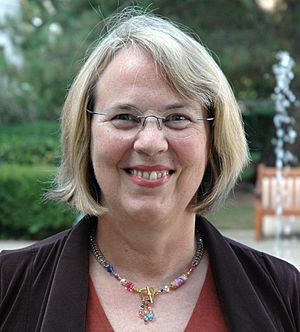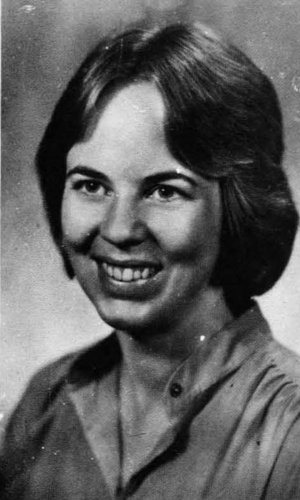Mary B. Kennedy facts for kids
Mary Bernadette Kennedy (born in 1947) is an amazing American scientist who studies the brain. She is a biochemist and a neuroscientist. This means she looks at the tiny chemical parts of our bodies and how our brains work. She is a professor at the California Institute of Technology, often called Caltech. She has taught there since 1981. Her research helps us understand how our brains make and store memories. She studies the tiny "machines" inside brain cells that help us learn and remember things.
About Mary Kennedy
Mary Kennedy was born on July 4, 1947, in Pontiac, Michigan. Her family moved to South Bend, Indiana, in 1953. Her dad owned a shoe store, and her mom took care of the home. Mary is the oldest of six children. She has four sisters and one brother.
Mary went to St. Mary's College (Indiana) in South Bend. She earned a science degree in chemistry in 1969. In 1975, she got her Ph.D. in biochemistry from Johns Hopkins University. After that, she started studying the brain. She did special research at Harvard Medical School and then at Yale University. In 1981, she joined Caltech as a professor. She became a full professor in 1992. In 2002, she was named the Allen and Lenabelle Davis Professor of Biology.
What Mary Kennedy Discovered
Mary Kennedy's lab has made big discoveries about how our brains work. She studies how brain cells talk to each other. This "talking" is how we learn and remember things.
One of her big discoveries was about a special protein called CaMKII. In 1983, her lab found out that this protein is very important for brain activity. It helps control how brain cells connect and remember. She showed that CaMKII is a major part of a special area in brain cells called the postsynaptic density. This area is like a tiny receiving station for messages in the brain.
Later, her lab found another important protein called PSD-95. This protein acts like a "scaffold" or a building frame inside brain cells. It holds other important proteins in place. Think of it like a shelf that keeps all the right tools in the right spot. This helps brain cells work together better. Her work showed that this "scaffold" helps brain cells become stronger at sending and receiving messages. This is super important for how we learn and form memories.
More recently, Mary Kennedy is studying another protein called synGAP. She is working with other scientists to create computer models. These models help them understand how all these tiny parts work together inside brain cells to help us learn and remember.
Awards and Honors
Mary Kennedy has received many awards for her important work:
- 1985: McKnight Neuroscience Investigator Award
- 1991: Fellow of the American Association for the Advancement of Science
- 1991: Faculty Award for Women Scientists and Engineers (from the National Science Foundation)
- 1992: Javits Neuroscience Investigator Award (from the National Institutes of Health)
- 1999: Special Lecturer at the Annual Meeting of the Society for Neuroscience
- 2002: Elected Fellow of the American Academy of Arts and Sciences
- 2006: Fondation Ipsen Prize in Neuronal Plasticity



